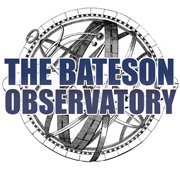

Bateson is the Susanville representative for the Research Education Cooperative Occultation Network and part of a 15-telescope grid from Bishop to Cedarville.
“We have obtained funding to add another 25 telescopes,” explains Bateson, “and by this summer we will have at least 40 telescopes from Mexico to the Canadian Border.”
When celestial objects like the moon, planets or asteroids move between an observer and a distant star, the light from that star will dim for a few seconds then brighten again. The occultation path across the Earth is roughly the width of the asteroid.
By capturing telescopic videos in concert with the International Occultation Timing Association, each observatory contributes unique data which researchers can use to accurately model size and motion of celestial bodies.
RECON is a citizen science research project aimed at exploring the outer solar system. Funded by the National Science Foundation (NSF) Division of Astronomical Sciences, this project involves teachers, students, amateur astronomers, and community members from across the Western United States to conduct coordinated telescope observations to measure the sizes of objects from a region called the Kuiper Belt.
For more neat photos and information you can follow this link the Bateson Observatory’s Facebook page.
Watch the middle star in the video below. At the 8 second mark the star disappears as the asteroid moves in front of the camera. At 15 seconds the star reappears as the asteroid moves out of our way. Bateson’s video shows that the asteroid blocked the star’s light for 6.94 seconds. RECON and IOTA can now improve their data on the asteroids size and orbit.





